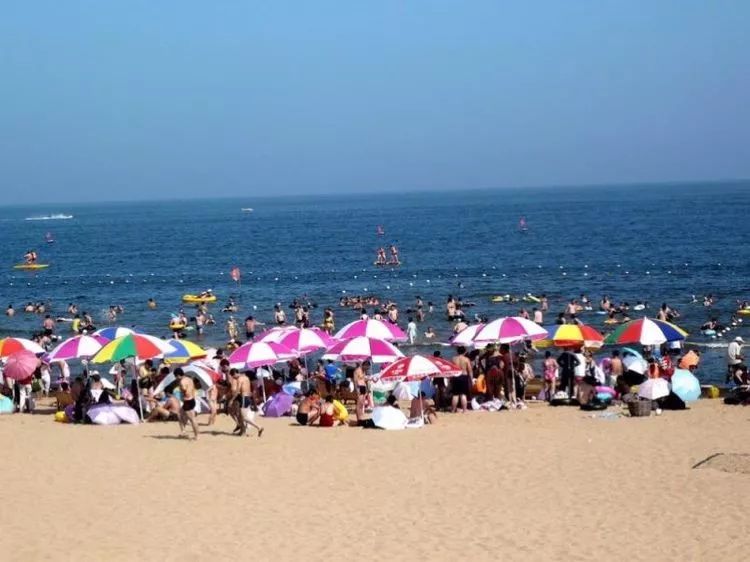
1. Shanhaiguan Pass City
Shanhaiguan, also known as Yuguan, echoes the Jiayuguan Pass in Gansu Province thousands of miles away. It is named "Shanhaiguan" because it is close to the mountains and the sea. The ancients called it "the unparalleled key to the two capitals and the first pass of the Great Wall", so it has the reputation of "the first pass in the world". In ancient times, Shanhaiguan was the boundary between the inner and outer customs.
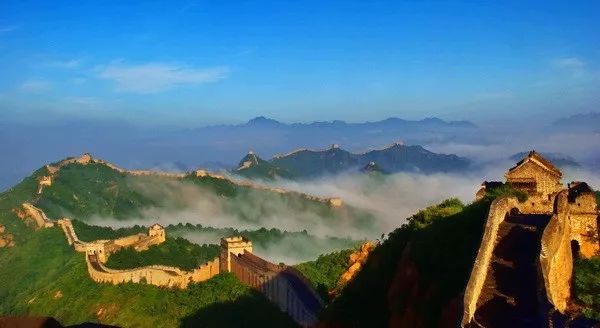

Shanhaiguan built customs and guards in 1381 and has a history of 600 years. It has been an important military town since ancient times. Qin Liangyu, a female general in the late Ming Dynasty, once guarded Shanhaiguan.

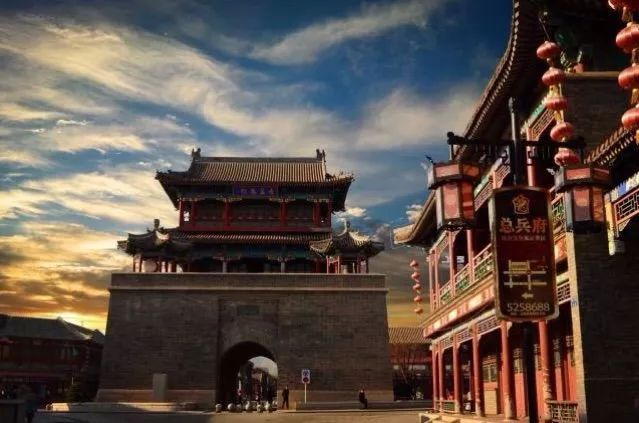
Shanhaiguan Guancheng was built during the Hongwu period of the Ming Dynasty. It is a small square city with a circumference of about 4 kilometers. The entire city is connected to the Great Wall, with the city as a gate, and has a variety of ancient military defense buildings. It is a complete defense system. Chengguan.

The Ming Dynasty city walls in Guancheng are basically intact, and most of the main streets and alleys have remained intact. In particular, a group of well-preserved courtyard houses make the ancient city look more primitive.


What adds the most color to the ancient city is the Zhendong Tower, the east gate of Guancheng. The plaque "The First Pass in the World" written by Xiao Xian, a calligrapher of the Ming Dynasty, towers above it. It looks majestic to the surrounding areas, and the writing is vigorous and vigorous, which is integrated with the style of Guancheng Tower. .

Travel tip: The real plaque of "The First Pass in the World" was taken to Japan when Japan invaded China, and the current plaque was copied later.


The most eye-catching thing in Shanhaiguan Ancient City, apart from the Bell and Drum Tower located in the center of the ancient city, are the five archways arranged along the East-West Street. These five archways were carefully selected and renovated from the original abandoned 40 archways.
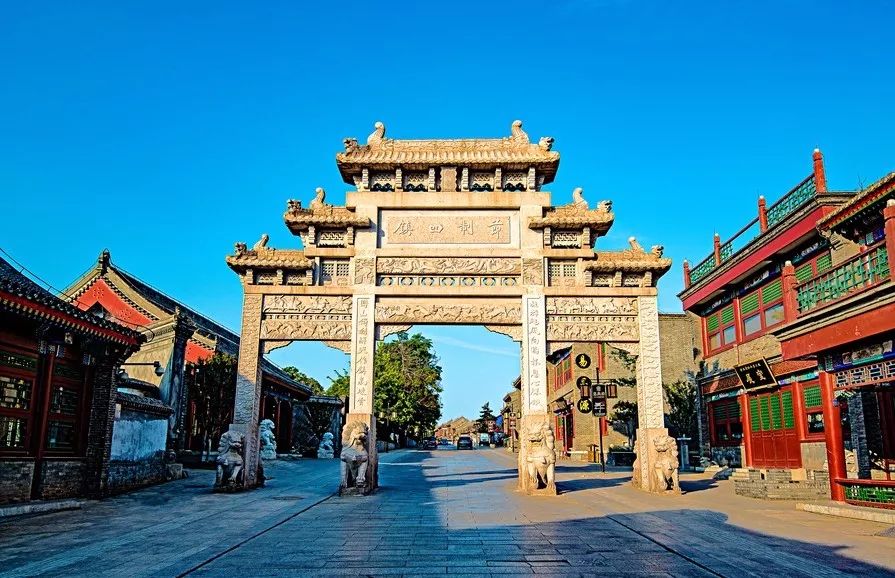
2, old dragon head
Laolongtou is the most famous scenic spot in Shanhaiguan, four kilometers away from Shanhaiguan City. It is the only naval and army defense system on the Great Wall that integrates mountains, seas, passes and cities. It was previously mistakenly believed to be the eastern starting point of the Ming Great Wall.

Travel tip: Before 1990, Laolongtou was considered the northeastern starting point of the Ming Great Wall. It has been found that the eastern starting point of the Ming Great Wall is the "Hushan Great Wall" located in Hushan Town, Kuandian County, Dandong City, Liaoning Province.

Chinese people like to compare the Great Wall to a giant dragon that stretches across the land of China. At the easternmost end of the Great Wall is the sea-going stone city built by the anti-Japanese hero Qi Jiguang of the Ming Dynasty. It is like a high dragon head reaching into the sea. Hence the name "Old Dragon Head".

Today's Laolongtou Scenic Area is mainly composed of seven parts: Seaside Stone City, Tanah Lot Temple, Jinglu Terrace, Nanhai Pass, Chenghai Tower, Ninghai City and the Coastal Great Wall. Chenghai Tower was built in the Ming Dynasty and later rebuilt during the Kangxi and Qianlong years of the Qing Dynasty. It is the commanding heights of Laolongtou and a scenic spot for viewing the sea.

Ninghai City is a very important part of the Lao Longtou military defense system. The military buildings in the city, such as the barracks area, the school field, Longwu Camp, the Dianjiang Tower, and the military attache's residence, show the style of the Ming Dynasty border defense fortress.

It is a pity that when the Eight-Power Allied Forces invaded Shanhaiguan, Chenghai Tower was destroyed by fire. Most of the architectural landscapes visited by tourists now were restored after 1985.

Opposite the Stone City that enters the sea is the Thailand Temple building complex that also protrudes into the sea. The octagonal sea-viewing pavilion at the front makes the entire group of buildings appear somewhat transparent despite its heaviness. Against the vast background of the open sky and mountains, Lao Longtou and Tanah Lot Temple are the most beautiful scenes in each other's eyes.


3. Beidaihe
Beidaihe is an area under the jurisdiction of Qinhuangdao City. It is an exquisite and romantic seaside tourist resort. The coastline of Beidaihe is about 20 kilometers long. The beach has relatively good sand quality and a gentle slope. It is an excellent natural bathing beach that makes people feel relaxed and happy.


Beidaihe District is also the second largest villa area in China after Lushan in Jiangxi. At the end of the 19th century, the Qing government announced that the Beidaihe seaside would be a summer resort for Chinese and foreign people. Chinese and foreign celebrities, wealthy businessmen, and missionaries came to buy land and build villas. It was built into a summer resort with a colonial flavor.

By the founding of the People's Republic of China, more than 700 villas for Chinese and foreigners had been built, and more than 100 of them exist. Most of these buildings are characterized by red roofs, plain walls, and large cloisters, and are a collection of various European and American architectural forms.

After the founding of the People's Republic of China, Beidaihe built many new sanatoriums, seaside swimming pools, restaurants, and hotels. The scale was larger than before liberation, and it became China's largest seaside summer resort with relatively complete facilities. There are also holiday villas for central leaders. Chairman Mao lived in villa No. 95 , which means exclusive in the 95th year.

In addition, Beidaihe is also a holy place for bird watching. According to statistics, there are more than 1,000 species of birds in my country, and more than 400 species have been found in Beidaihe. Many of them are world-famous rare birds, such as black-billed gulls, white cranes, relict gulls, and red-crowned cranes.

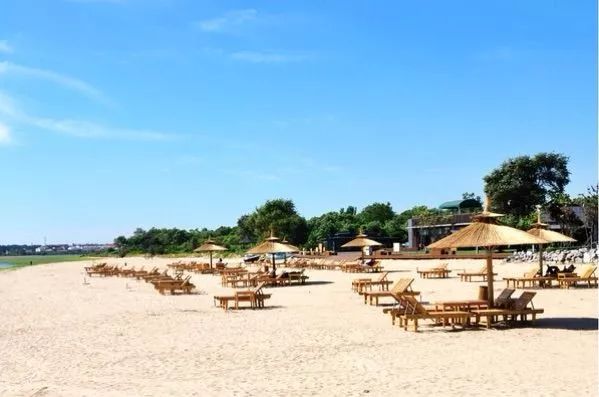
4. Pigeon Nest Park
Pigeon Nest Park, also known as Eagle Point Park, is located at the easternmost end of Beidaihe Beach. Because there is a huge stone (Eagle Point Stone) about 20 meters high on the seaside that was once the habitat of wild pigeons, so the "Pigeon" is left "nest" name. When migratory birds migrate every spring and autumn, this is a popular spot for many photographers to watch birds and take photos.


Pigeon Nest Park is a small park about 500 meters long and 200 meters wide along the beach. The tour is roughly divided into three parts: a mountain, a lake, and a beach. The mountain refers to the rocky hill on the seaside - Yingjiao Stone, the lake refers to Yuanyang Lake in the center of the park, and the beach refers to the coastal beach wetland. In addition, there are man-made buildings such as the Sea View Corridor, Eagle Point Pavilion, and Chairman Mao Statue, which you can explore on foot in the park.


Pigeon Nest Park, with its spectacular view of the sunrise over the sea, is regarded as a symbol of Beidaihe. It was here that Chairman Mao looked far into the distance, filled with emotion, and wrote the immortal poem "Lang Tao·Beidaihe".

Here, tourists can climb to the commanding heights in the eastern part of Beidaihe, watch the sea, enjoy the red sun gushing out, see the fishing boats outside Qinhuangdao, and enjoy the scenery of Beidaihe where the sea and sky are the same color; follow the footsteps of great men at Yingjiao Pavilion, and appreciate Chairman Mao's "The Waves on the Sand". •The majestic momentum of Beidaihe.

Visitors can also ride on the waves, catch the tide, collect shells, and enjoy the coolness of summer. There are some simple recreational projects around the lake in the park, and you can also go boating on the lake, but these projects are all at your own expense.

5, Biluota Park
Biluo Tower Park is located in Xiaodongshan, Beidaihe Seaside, and is adjacent to Dove Nest Park in the north. It is surrounded by the sea on three sides and has beautiful scenery. Biluo Tower is the main building of the park. It is a spiral sightseeing tower in the shape of a conch. It has a novel and unique shape and is tall. twenty one The park is divided into seven floors with a spiral staircase. Biluo Tower Park is relatively dull during the day, but very lively at night.

Biluo Tower is the highest point in the Dongshan area of the seaside. You can have a panoramic view of the vast sea from the tower. In Biluota Park, you can not only watch the sunrise in the morning and listen to the sound of waves at night, but also provide special entertainment projects such as seaside bathing beaches, sea fishing, sea disco bars, sea food courts, and cruises to see Qinhuangdao. There are also beach bonfire parties, beer salons and various large-scale performing arts activities held here every night, which is very lively.
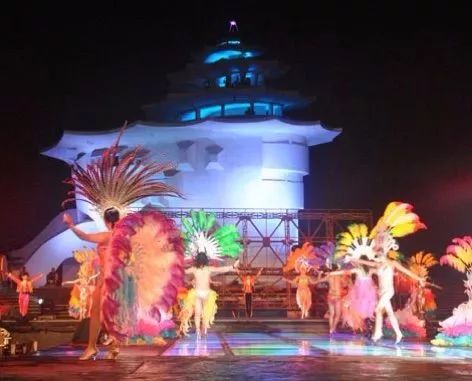
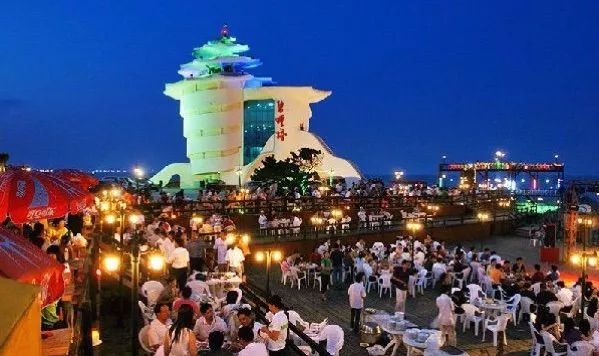
6, Olympic Park
Olympic Park is located beside Beidaihe Binhai Avenue, between Pigeon Nest Park and Qilou Strange Garden. It is an Olympic-themed park that provides leisure and entertainment venues for citizens.

There are small landscapes such as Olympic champion handprints, Olympic reliefs, and musical fountains in the park. There are also basketball courts, tennis courts, football fields, roller skating rinks, chess games and other fitness and leisure venues suitable for people of different ages.

7, strange buildings and strange gardens
The Strange Building and Garden is located in the center of the seaside, covering an area of 99 It is a man-made landscape scenic area consisting of two parts: the Strange Building and the Strange Garden. 99 There are rock waterfalls, corridors and cable bridges in the strange building, and many doors and rooms, making it difficult to distinguish between the real and the fake.


In the strange garden, there are green pines, green cypresses and shade trees. The park also has Russian-style wooden houses, an open-air light stage, swings, hanging chairs and other leisure and entertainment facilities.

8, Sand Sculpture Ocean Paradise
Sand Sculpture Ocean Park (Sand Sculpture World) is located in the middle of the Gold Coast Tourist Area in Changli County, Qinhuangdao, between Changli International Sand Sliding Entertainment Center and Emerald Island. The tourist area has fine sand, gentle coast, clear water, beautiful coastal desert wonders and good The natural environment has both.


The tall undulating sand dunes, dense green woods, vast blue sea, and wide and flat beaches in the park are combined wonderfully and harmoniously to form a very magnificent natural ecological landscape.


The scenic spot also makes full use of the 40 sand dunes that are more than 40 meters high due to the action of ocean tides and monsoons over more than 2,000 years, and has carved many exquisite sand sculptures for tourists to enjoy.

The Golden Coast Sand Sculpture World Scenic Area includes more than 20 free projects suitable for all ages, including bathing beaches, water parks, sand sculpture viewing, sand skiing, and grass skiing. In addition, there are many self-funded projects such as flying car show, crocodile show, water bicycle, sea speedboat, seafood banquet and so on.

9, Laohushi Park
Laohushi Park (also known as Laohushi Bathing Beach) is located in the center of Beidaihe Scenic Area. Its characteristic landscape is several dark red rocks of different shapes lying scattered on the coast, resembling a group of tigers, hence its name.

The blue sea, golden sand and meteorites here attract domestic and foreign tourists to spend summer sightseeing, bathe in the sea, sunbathe, and enjoy the gifts of the sun and the beach to people. There is a small pier west of Laohu Shi, where you can take yachts and cruise ships. It is an ideal place for viewing and fishing.

Laohushi Beach can be said to be the most visited beach in Beidaihe because it is adjacent to Baoer Road, Beidaihe Tourism and Commercial Street - the busiest place in Beidaihe. There are many shops selling things around it, various small and medium-sized hotels, B&Bs, and many seafood restaurants. It is a real one-stop place for food, accommodation and entertainment.

10. Free bathing beach
Zhongtantan : The beach from Beidaihe Haibin East Road to Jianqiu Road is commonly known as Zhongtantan. The beaches in this area are located close to the mountains and the sea, with a moderate location, wide shallow sea and clear sandy beaches.

Pingshuiqiao Bathing Beach: Also known as Pingshuiqiao Park, walk west from Laohushi Park Bathing Beach for about 500 meters. The bathing beach is a long strip along the coast, with many flowers and trees planted in it, and there are also walking paths.

Repulse Bay Beach: Located opposite Qinhuangdao Wildlife Park, the beach is about 3 miles long and is a shallow sea area with a depth of less than 6 meters. The waves here are small and the water is relatively clear. The bathhouse has also introduced a variety of entertainment projects.
